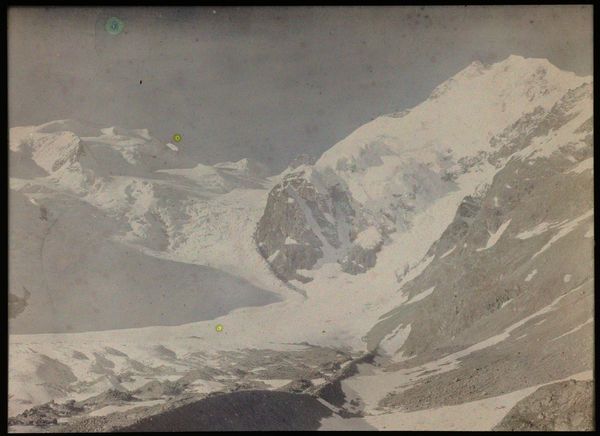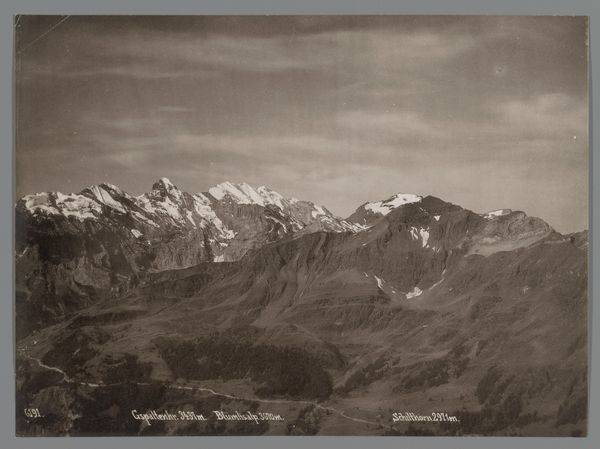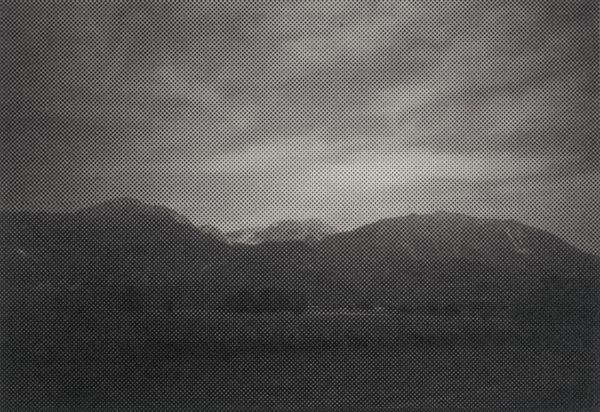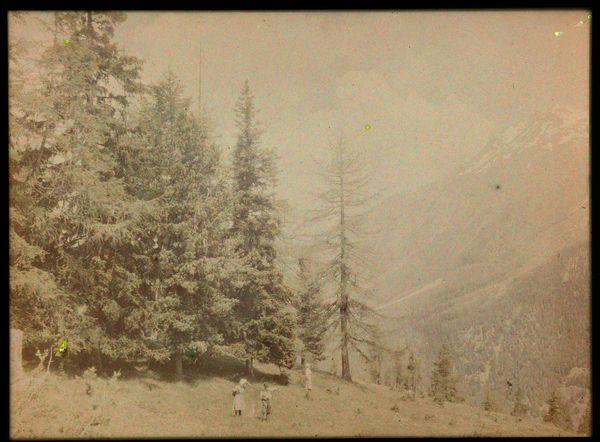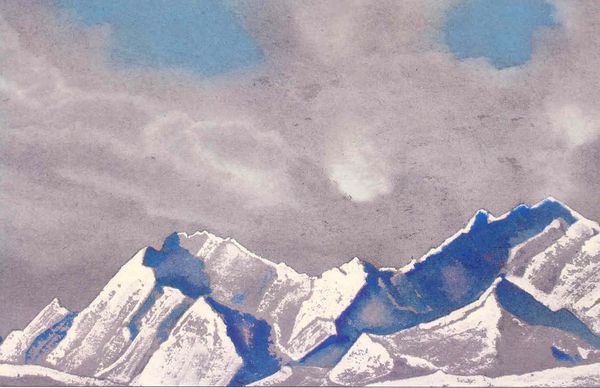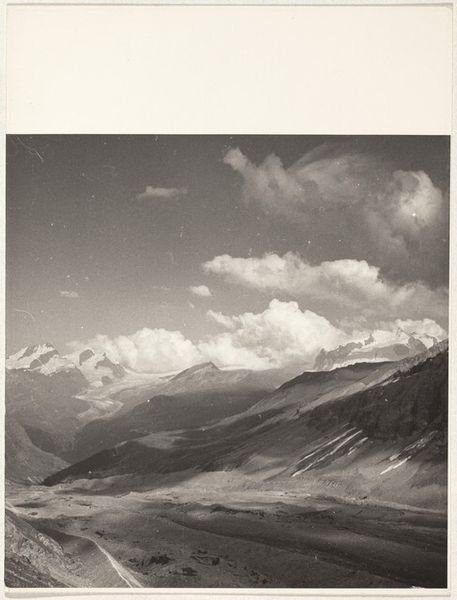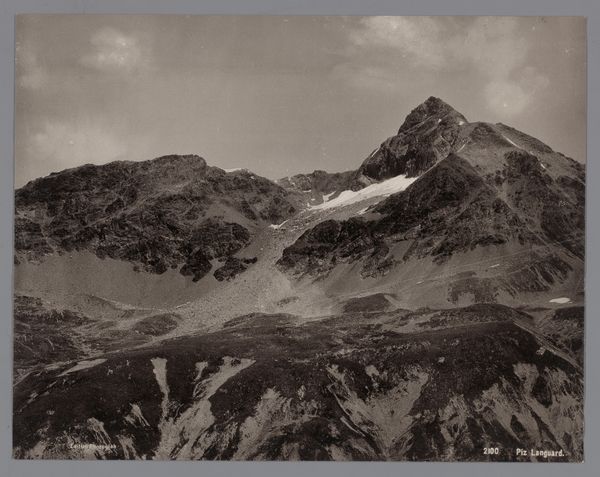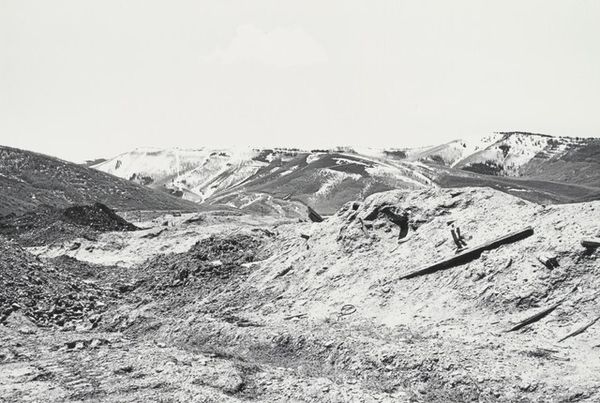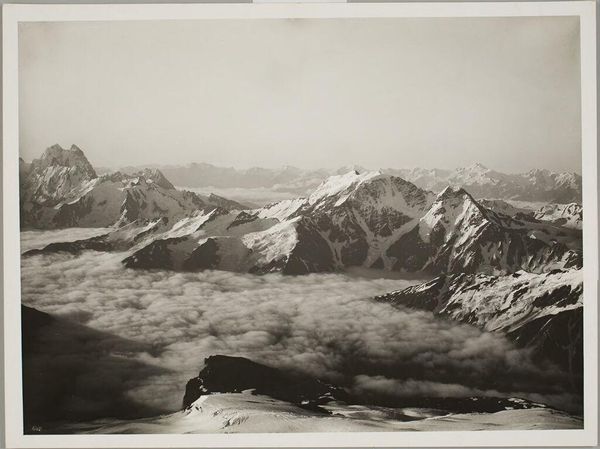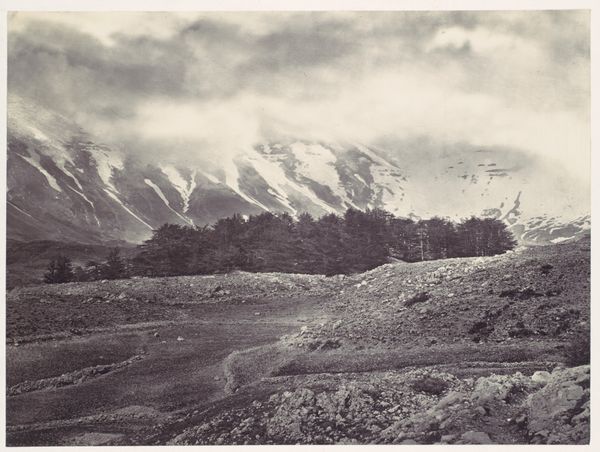
Dimensions: height 88 mm, width 119 mm
Copyright: Rijks Museum: Open Domain
Curator: This striking print, housed here at the Rijksmuseum, is titled "Gezicht op besneeuwde bergtoppen," or "View of Snowy Mountain Tops," and is attributed to Adolphe Burdet, likely created between 1907 and 1930. Editor: My first impression is one of subdued majesty. The monochrome tones lend a timeless quality, but there's also a certain flatness, a lack of dynamic contrast that makes the mountains feel almost…two-dimensional. Curator: I find the lack of high contrast fascinating. Consider the laborious wet-plate collodion process that artists of the era used. Creating these images was physically demanding work often done outdoors. The commitment of creating this in challenging Alpine weather conditions shows the reverence of laborers using technical skill. Editor: Technically skilled labor aside, how do we interpret this aesthetic choice? It feels deliberate. The muted tones flatten depth and spatial relationships. Curator: Perhaps the print speaks to early photographic processes. These limitations highlight the social dimension of accessing technological innovation and showcase an emerging consumer base shaping preferences in art. Editor: Or maybe the limited grayscale, along with the almost hazy focus, lends the work an air of mystery. What lies beyond these visible peaks? I feel compelled to contemplate the sublime, the unknowable. It's evocative of certain romantic notions of landscape painting. Curator: Right, but we must also understand photography’s relationship with landscape, both social and material. This photo isn’t an innocent portrayal. It's steeped in a system of equipment production, from cameras to chemical processes, all contributing to our viewing experience. This impacts ideas around leisure and outdoor experiences. Editor: You're making me consider how the constraints of the photographic process have dictated a style—the atmospheric perspective perhaps a direct result of these limitations. However, for me, the formal considerations still outweigh the sociopolitical. It’s in its aesthetic construction that meaning surfaces. Curator: I disagree—we can understand social dynamics via production elements shaping content. The formal elements do help create an image to start our exploration! Editor: It certainly provides food for thought regarding process and artistic vision. Curator: Absolutely, and by exploring those conditions together, we uncover broader understandings.
Comments
No comments
Be the first to comment and join the conversation on the ultimate creative platform.

